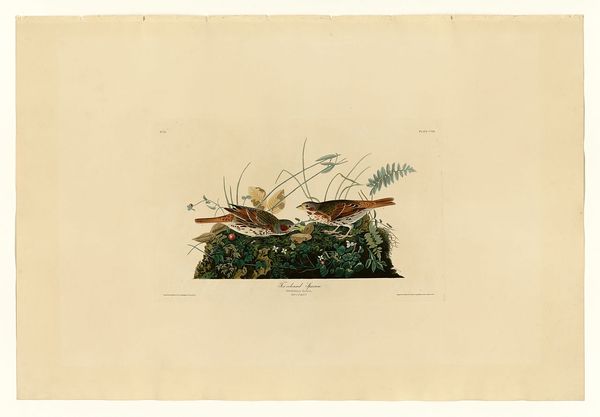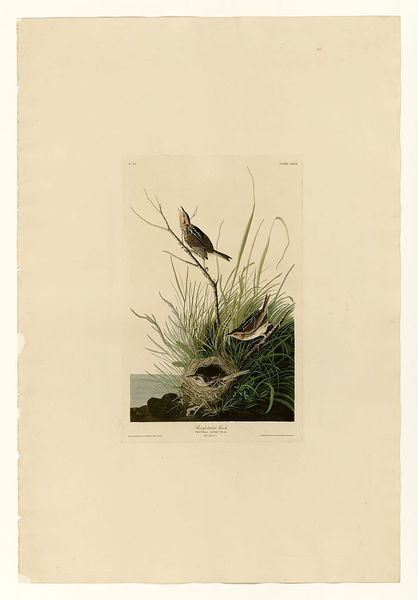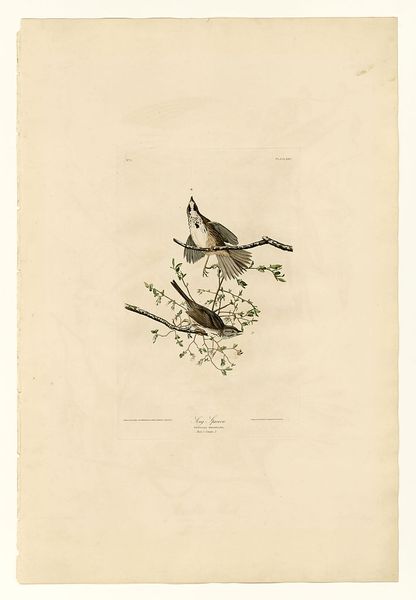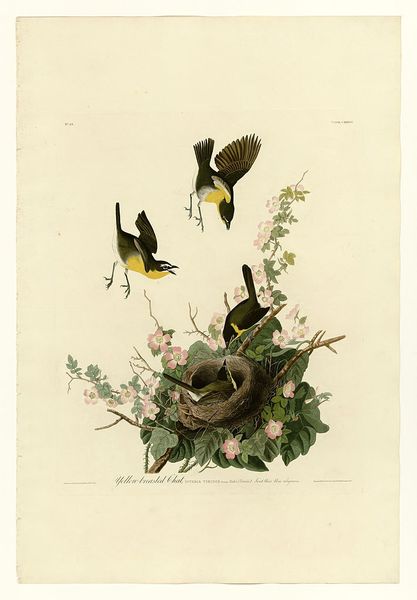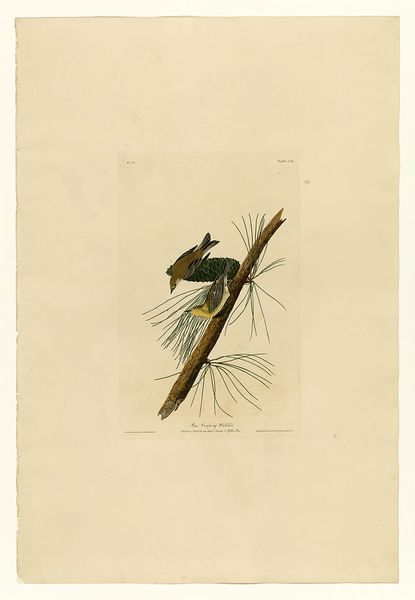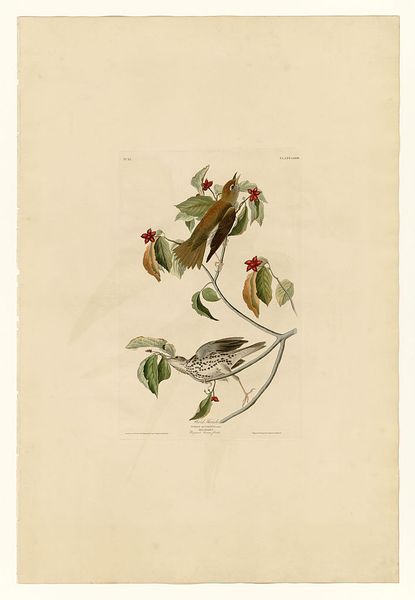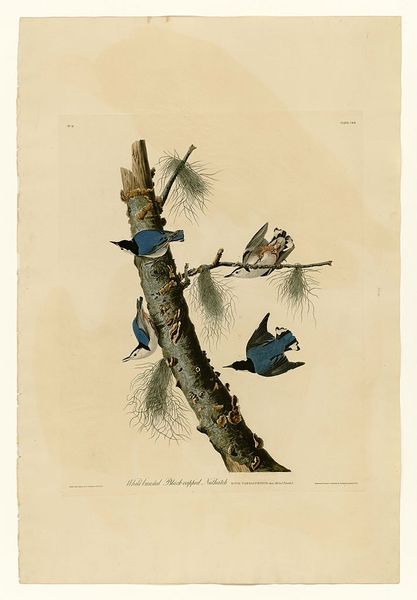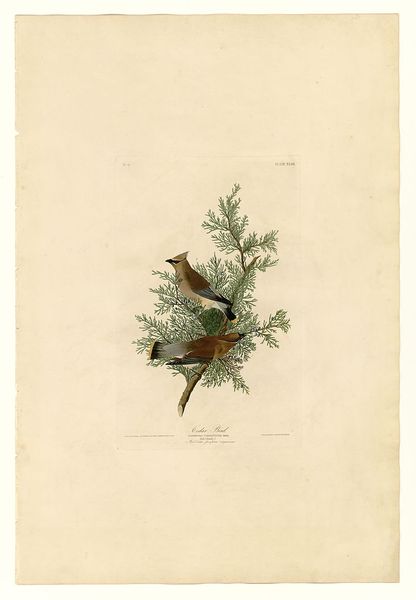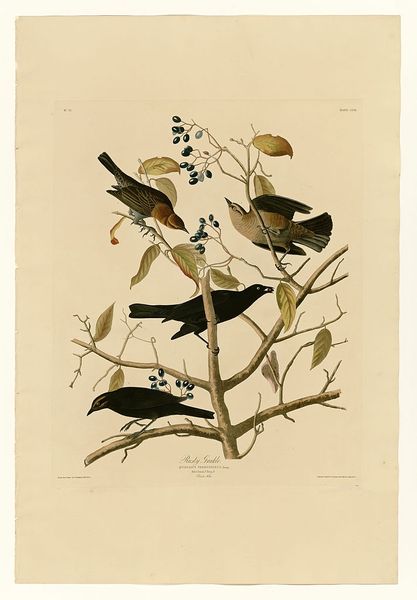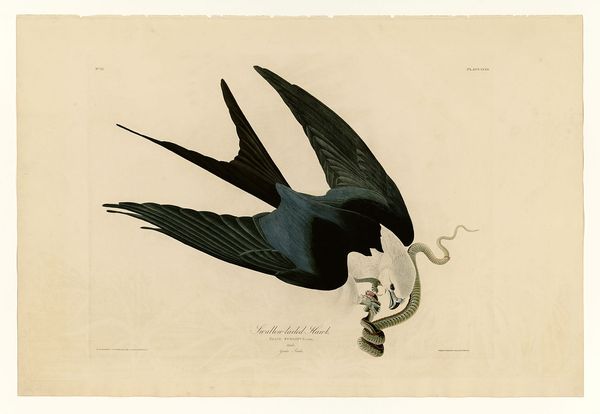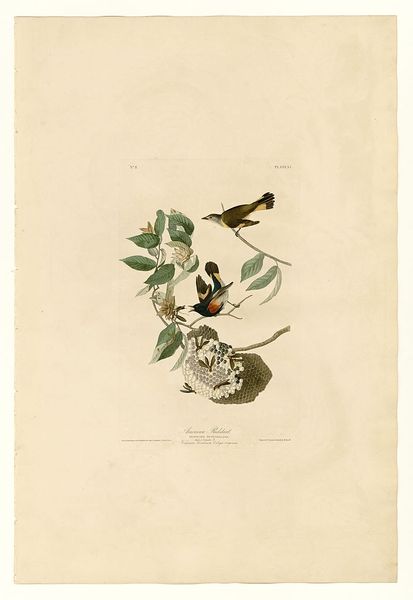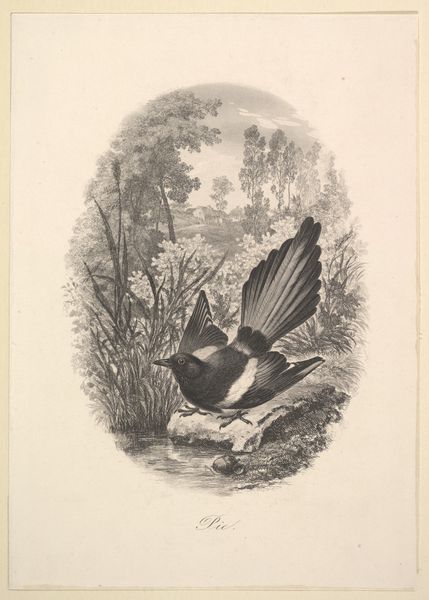
watercolor
#
portrait
#
bird
#
watercolor
#
romanticism
#
watercolour illustration
#
watercolor
#
realism
Copyright: Public domain
John James Audubon made this print, "Plate 99 Cow-pen Bird," as part of his ambitious project to document the birds of America. Audubon's work is deeply embedded in the social and cultural context of the 19th-century United States, a period of westward expansion and increasing industrialization. Look at how the image creates meaning through visual codes, cultural references, and historical associations. Audubon’s meticulous depiction of the Cow-pen Bird, now known as the Brown-headed Cowbird, is not merely a scientific record. It reflects the era’s fascination with natural history and the romantic idealization of the American wilderness. Yet, it also hints at the complex relationship between humans and nature. The name "Cow-pen Bird" itself suggests the bird’s association with agricultural practices, raising questions about land use, environmental impact, and the changing landscape. To truly understand Audubon's art, we must consider its institutional context. His "Birds of America" was a monumental undertaking, requiring patronage and distribution networks that were intertwined with the economic structures of his time. Examining archival materials, such as letters and subscription lists, can reveal the social networks that supported Audubon's project and the broader cultural values that shaped his vision of the American wilderness.
Comments
No comments
Be the first to comment and join the conversation on the ultimate creative platform.
